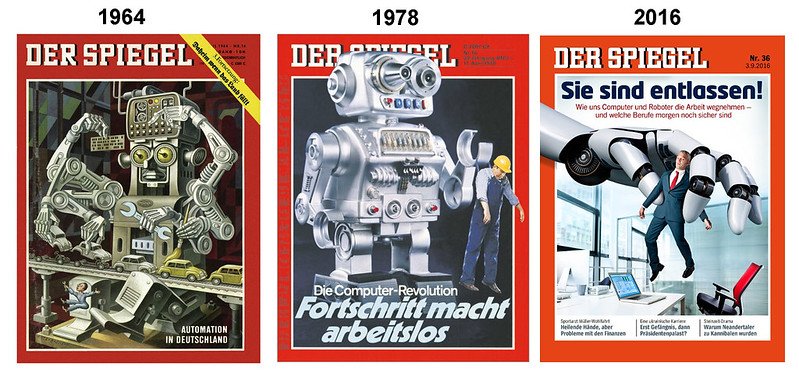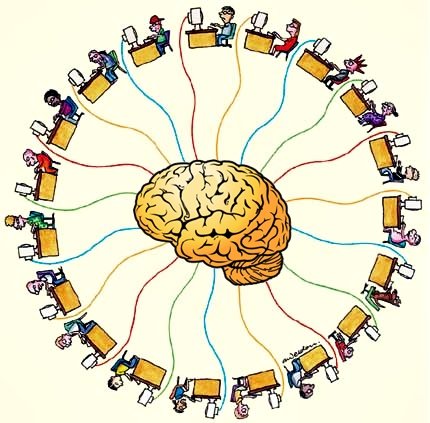In recent years Artificial Intelligence (AI) has gone from being the preserve of science fiction plots to a reality in our everyday lives. From major breakthroughs in medical science to concerns about social media driving disinformation and division; automation and algorithms are reshaping how we live, work and communicate. As a result, we are increasingly aware not only of the opportunities this technology brings, but also the risks it poses.

But what does AI mean for philanthropy? Will it bring new opportunities to transform the ways in which we give and the ways that charitable organisations work? Or will it bring new challenges that philanthropy will be called on to help address?
What are we talking about?
It is worth saying that “artificial intelligence” may not be necessarily the most helpful terminology. It conjures unrealistic images of robots with human-level intelligence, when in reality what we are most often talking about is just computer systems that have been designed to automate a narrow range of tasks to a high level. This often involves machine learning (ML), which refers to a class of algorithms that are able to train themselves (or “learn”) to perform set tasks through a process of repeated trial, error and self-modification using large data sets.

A range of barriers – from lack of technical expertise to low risk appetite – mean that non profit organisations are generally not early adopters of emerging technology. So it is perhaps unsurprising that the impact of AI on the charity sector has so far been relatively limited. But what impact might it have in coming years?
AI for good
Early uses of AI in the nonprofit world have focused on using the technology as tool to find new ways of delivering on charitable missions. This has taken two main forms. The first is the use of ML to produce new predictive models, which has happened primarily in areas where there are ready data sets and willing technology partners. Medical research is the most notable here, and we have already seen a number of charities and philanthropic funders involved in partnerships aimed at using AI to develop new methods of early diagnosis and intervention for life-threatening diseases.
Automating processes
Whilst some organisations are using AI directly to achieve their charitable mission, the wider impact on the nonprofit sector is likely to come from the effect the technology has on nonprofit organisations themselves.
In recent years AI-driven developments in areas like image recognition and natural language processing have made it possible to automate more and more tasks; including ones previously thought impossible without human involvement. As a result, many of the early wins for AI in the commercial world have been in finding ways to automate “back office” processes, and the same is likely to be true for nonprofit organisations in coming years.

There is often fear that automation will make human workers redundant and lead to job losses, but this need not necessarily be the case. Instead, the technology could be used to take the burden of repetitive or data-heavy tasks from human workers and thus free us up to focus on higher-value activities such as relationship building, which computers are not able to do. In their book The Smart Nonprofit, authors Allison Fine and Beth Kanter describe this as the “dividend of time” that AI and automation can bring.
Some AI tools could even make human-to-human interactions easier. A growing number of transcription and translation services, for instance, are helping to overcome language and accessibility barriers and make events and meetings more inclusive.
Natural Language Processing & Collective Intelligence
Natural Language Processing (NLP) refers to the application of ML systems to the task of interpreting and producing human languages. This is a major growth area right now, and the capabilities of NLP systems have increased dramatically in the last few years.
NLP could have a range of powerful applications when it comes to philanthropy. It could, for instance, enable funders to move away from rigid form-filling application processes (which are known to disadvantage smaller organisations and marginalised communities) by using NLP to allow applications to be made in a wider variety of forms using normal language (either in writing, or even verbally).

NLP is also a key enabler of “collective intelligence”. This describes a range of approaches which seek to harness the power of drawing knowledge from large groups of people (sometimes termed the “wisdom of crowds”) to make predictions or identify innovations and ideas. The role of NLP is to automate the process of capturing inputs, and thus make it feasible to engage large numbers of people in the process. Collective intelligence is thought by many to have huge potential and is being explored across the public, private and civil society sectors. (Nesta, for instance, has established a Centre for Collective Intelligence Design to “explore how human and machine intelligence can be combined to develop innovative solutions to social challenges”.)
More radically, perhaps, NLP could help to flip the current philanthropic funding model on its head. By capturing information from natural language sources, or harnessing collective intelligence input, funders would potentially be able to identify “under-the-radar” groups and organisations working on particular causes or in particular local areas and reach out to them (rather than waiting for them to make a grant application).
Conversational Interfaces & Chatbots
One very visible result of advances in NLP has been the growth of online chatbots and conversational interfaces (e.g. Amazon’s Alexa, Apple’s Siri etc). This has already started to have an effect on the nonprofit world. Some organisations are using chatbots to raise awareness among supporters; whilst others are using them deliver advice and information to service users, and help them find appropriate support quickly and discreetly. We are also beginning to see commercial providers enabling donations through voice interfaces which may prove potentially lucrative new opportunities for fundraising.

The growing use of conversational interfaces will bring new challenges too, as it is likely to change the nature of how we find and access information over the internet. Organisations that have had to work had to understand Search Engine Optimisation (SEO) may find that the now have to get their heads around Voice Search Optimisation (VSO) too.
Patterns & Predictions
One area where AI systems excel is in identifying patterns in big data, which can then be used to make predictions. When it comes to philanthropy, it might be possible to apply machine learning to data on existing grantmaking to identify patterns and predictive measures of success that could be used to inform future funding.
Looking slightly further ahead; as more and more real-world objects come to have ‘digital twins’ (online versions of themselves that replicate their features and properties exactly), new opportunities for experimentation, modelling and making data-driven predictions are likely to emerge.
Unintended Negative Consequences
Any technology as powerful as AI will inevitably bring new challenges as well as new opportunities, and we are increasingly aware as a society of what some of these new challenges might be.
Many, for instance, are now concerned about the dangers of “algorithmic bias”: where algorithms trained on data sets that reflect historical biases for factors like race or gender come to exhibit those same biases (and often strengthen them) over time. As charities consider how they can harness AI, how it might affect them as organisations, and how it might affect those they work with, they need to understand these kinds of challenges and what can be done to address them.
The Future?
There is clearly opportunity to harness the power of AI to make philanthropy more effective, and to find innovative new ways of addressing social and environmental issues. However, funders and civil society organisation need to ensure that they also understand the challenges the technology may pose and are able to mitigate them appropriately. And even those organisations that have little interest in engaging actively with AI need to be aware of how it may affect them – and more importantly the people and communities they serve – so that they can speak up effectively on their behalf in the wider debate about the societal impact of AI. Only in that way can we hope to ensure that the technology is developed in a way that benefits, rather than harms, society.

